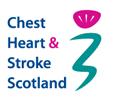View text alternative
In this video we offer a practical guide to having a consultation about inhalers.
When discussing inhaler treatment with patients it is important to practice shared decision making and support self management. Links to resources that explain these principles are provided in the documents which accompany this video.
Before proceeding let’s take time to familiarise ourselves with the terms concordance, compliance and adherence. These are often used interchangeably and sometimes cause confusion.
Concordance refers to the practice of working in partnership with patients to agree a treatment plan.
Compliance refers to the act of following the treatment plan.
Adherence refers to sticking with the treatment plan.
Studies have found poor adherence with inhaled therapy. The following may have a negative impact on compliance and adherence.
- Fear of adverse effects
- Belief that the medication is not needed or will not work
- Not knowing what the medication is for
- Complexity of the device
- Complexity of the treatment regime
Agreeing a treatment plan with the patient may improve compliance and adherence.
When prescribing inhalers clinicians should adhere to local prescribing preferences where possible. You should be able to get a copy of these from a prescribing advisor or respiratory specialist. These are ours and like most I have seen they provide a mix of devices that are easy for the patient to use and for the patient to fit into their daily routine. As well as being both effective and cost effective.
In practice I keep copies in my inhaler bag and on my computer so that I have access to them at all times.
Infection control
Use single disposable devices and equipment to check patients’ inhaler technique at all times. You should not use one device on many patients.
In this video we use a Nexthaler only because we happen to be filming a patient video for this today. The essence of the consultation is applicable to any inhaler.
The consultation
Each patient consultation should include:
- Discussing treatment options
- Having a conversation with the patient to find out what their aims and hopes for treatment are.
- What concerns or fears they may have
- How they might fit the regime into their current medication regime and lifestyle to promote adherence
- How to store the inhaler
- How to use the inhaler
- Cleaning the inhaler
- What to do if they forget to take a dose or double dose
- Replacing the inhaler
- Going to the hospital or clinic
Nurse – “Hi Jill. What information have you been given about today’s appointment?”
Jill – “Well I know I have got COPD and I am here to find out more treatment I can get for it” “I have got these two inhalers and they do help but I am still struggling with it”.
Nurse – “OK, in what way are you struggling?”
Jill – “I am struggling with my breathlessness” “I know it won’t go away completely but I want to get it better”. “I keep getting chest infections and it’s just getting me down”.
Nurse – “OK, it sounds like reducing the breathlessness and the amount of flare ups is important to you”. “
Jill – “Yes”
Nurse – “Before we go on would it be OK if I could just check that you are using your inhalers correctly?”
Jill – “Yes”
Nurse – “That’s good, you are using them correctly”. “So tell me about your daily routine, including when you take your pills and inhalers”
Jill – “Well I get up at about eight and then I get my breakfast and I take my pills and my inhaler after that”. “Then I go about my day and then at night time I take my pills and inhaler before I go to bed”.
Nurse – “OK, do you always remember to take your pills and inhaler?”
Jill – “I always remember to take my pills but I do sometimes forget my inhaler”.
Nurse – “OK, when you say you sometimes forget, how often say in one week would you forget to take your inhaler?”
Jill – “Not often, just sometimes.” “Once in a blue moon”. “Once a month or something”
Nurse – “So Jill where do you keep your pills?”
Jill – “I keep them in the cupboard in the living room”.
Nurse – “OK what about your inhalers?”
Jill – “I keep them in the kitchen”. “I suppose I should keep them together shouldn’t I?”
Nurse – “Would it help you to remember to take them?”
Jill – “Yes, yes, that’s what I’ll do”. “I’ll store them all together”.
Nurse – “Right, the living room would be a good place to store them because they should be kept in a dry environment away from heat and children”. “Tell me, would children be able to get into the cupboard in the living room?”.
Jill – “No, no it’s high up and we keep it locked”.
Nurse – “So we know that you are using your inhalers correctly and that you are using them when you should”. “So we can now look at inhalers that might help to reduce the breathlessness and the amount of flare ups that you are having”. “These are the ones that the chest specialists recommend”.
Jill – “And which one is the best one?”
Nurse – “There is no evidence that one is better than the other”. “However you are using powder inhalers and you are managing them well, so I think we should maybe stick with them”. “So we should maybe just take this one out of the equation because it works a wee bit differently”. “So then you are left with these two, OK”. “They are both used in similar ways and they are both used to help reduce the frequency and severity of flare ups”. “Ok, This one you would just take one puff in a morning”. “And this one you would take two puffs morning and night”. “It really just depends on what you would prefer to do”?
Jill – “Ok, I think it would be easier if I use it the same as these ones when I take it twice a day”.
Nurse – “Ok” “So I will tell you a bit about this inhaler and then I will show you how to use it”. “So this inhaler has got two drugs in it and they will help to reduce the breathlessness and the amount of flare ups that you are having”. “It is really important that you take it morning and night whether you need it or not”. “Because they can take up to six weeks to work”. “So it should be taken whether you have got infection or not every day”. “So it will go on your repeat prescription, OK” “So you just need to make sure and renew it at the end of every month, but we will talk a bit more about that later”.
Jill – “But it won’t interfere with my other medications or my other medical conditions will it”?
Nurse – “It shouldn’t do but if you experience any side effects then just give us a call, OK”. “The main side effect of this is that it can cause voice hoarseness and a bit of thrush in your mouth”. “After you have used it rinse out your mouth and brush your teeth”.
Jill – “OK” “So how do I use this inhaler”?
Nurse – “Ok, I’ll show you how to use the inhaler”.
“When you get the inhaler there will be instructions inside the box so take them out and that will show you how to use it”.
“OK, You should take the inhalers at the same time every day”. “You can take them with or without food”. “And when you are taking it keep your head in a neutral position”.
“So this is the inhaler” “If you open that up that’s the dust cap”. “OK and when you open it up you will hear it click”.
“This is the mouth piece so you just have to make sure that when you are not using the inhaler that the dust cap is covering the mouthpiece”. “You don’t want any dirt or dust to get in there”.
“These are the air vents so make sure you don’t cover them with your fingers or your clothes”.
“At the front there is a dose counter that counts from 120 down so you know when you are getting empty”.
“And at the back here there is a label and on that label you would just put the date for six months from when you opened it because that’s when the drug will expire”. “But you will be getting a new one every month so it shouldn’t expire”.
“So to use it you will open that up and hear the click”. “You breathe out but not in to the device”. “So like this, put it in your mouth, seal with your lips and breathe in hard and fast and hold your breath from five to ten seconds” “So Like this, I will show you from the beginning”. “Open dust cap until you hear a click” “breathe out away from the inhaler” “Put the inhaler in your mouth, making a seal with your lips then breathe in hard and fast and hold for a count of five to ten seconds” “Then breathe out slowly” “Replace the dust cap”.
“So you will have to take another puff so just wait, close it over and do the same again”. “This time listen out and you will hear it click” “OK, so that’s when you know you are using it properly”. “Open up, click” Breathe in and hold while count to ten. Breathe out slowly.
“When you have finished just give it a wipe with a clean dry tissue and close it over”. “Then that’s you, just have a look at the dose counter to make sure that you are not running out”.
“So Jill, I’ll let you have a wee practice but once it is opened I will put this disposable mouth piece cover on it for you OK”?
Jill – “So I have to open it until it clicks”.
Nurse – “That’s right”.
Jill – “So I breathe out then I breathe in”. “Is that right”?
Nurse – “That’s fine and then you would just repeat that again for your second puff”. “Then again just remember to clean it OK”. “After you have used it remember to check the dose counter” “It will count from 120 downwards so you know when it is getting empty”. “When you get to about ten doses put in your repeat prescription”. “After you have used it rinse your mouth out and brush your teeth as I say just to prevent voice hoarseness and thrush”.
Jill – “What if I forget to take it”?
Nurse – “If you forget to take it, take it if you remember within an hour or two” “Anything more than that just forget it and get back on track with the next dose OK”.
Jill – “And what happens if I take too much”?
Nurse – “If you take too much just give us a phone and we will advise you”.
Jill – “What do I do if I forget how to use this once I’m back home”?
Nurse – “If you forget how to use it then there’s a few things you can do”. “There’s the pictured instructions inside with your inhaler leaflet”. “You can also ask the pharmacist, they will show you how to use it”. “There is also this website My Lungs My Life”. “It’s got videos on it that shows you how to use them so you can review it from the comfort of your own home”.
Jill – “OK Thank you”.
Nurse – “When you are going to the hospital or clinic take your inhalers with you along with a list of all your medications that you are on”. “It is really important you take your inhalers with you because they may not have the inhalers that you are on” “So, that’s us” “Are there any questions Jill”?
Jill – “No that has been really helpful”. “Thank you”.
Nurse – “If you have any questions then just give us a phone”.





